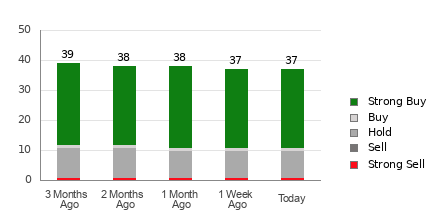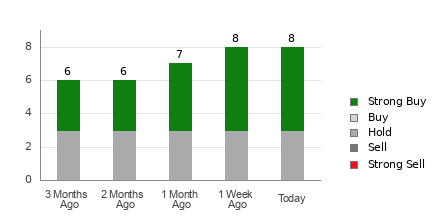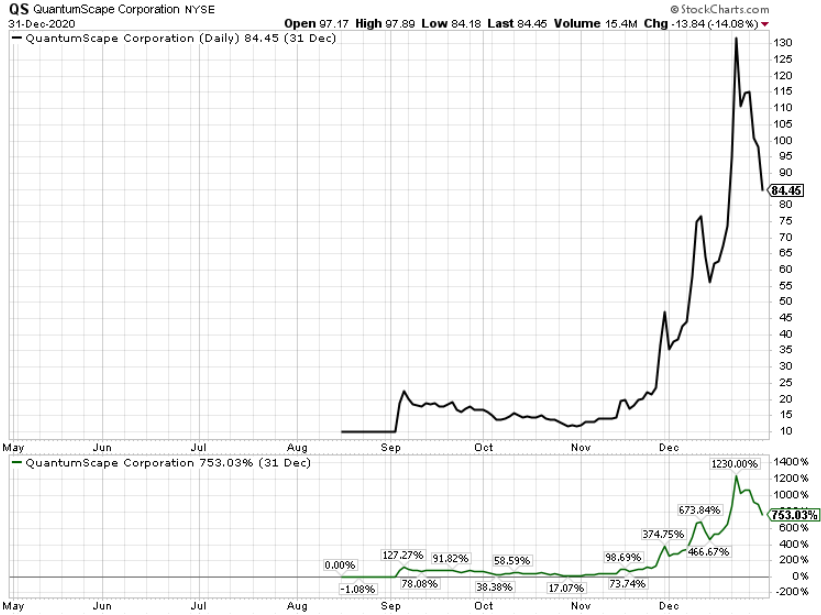Cocoa Prices Surge as Dollar Weakens; Demand Concerns Persist
May ICE NY cocoa (CCK25) closed up by +423 (+5.23%) on Friday, while May ICE London cocoa #7 (CAK25) rose by +221 (+3.69%).
Cocoa prices experienced a significant rally on Friday, driven by a selloff in the dollar (DXY00), which fell to a three-year low. This decline triggered short-covering in cocoa futures. However, concurrent strength in the British pound (^GBPUSD), which rose to a one-week high, mitigated gains in London cocoa as a stronger pound impacts cocoa priced in sterling.
Stay Informed: Sign up for Barchart’s free commodity analysis, covering everything from crude oil to coffee.
Earlier in the week, NY cocoa had reached a three-week low, while London cocoa plunged to a five-month low, fueled by concerns over a potential decline in consumer demand amid escalating global trade tensions and tariffs on cocoa imports. Notably, Barry Callebaut AG, a leading chocolate manufacturer, revised its annual sales forecast downward due to the impact of elevated cocoa prices and tariff uncertainty.
Over the past two months, cocoa prices have faced downward pressure. On March 21, NY cocoa hit a nearly five-month low partly due to a more optimistic supply outlook. The International Cocoa Organization (ICCO) provided a forecast on February 28 for a global cocoa surplus of 142,000 metric tons (MT) for 2024/25, the first surplus anticipated in four years. Additionally, the ICCO projected a year-over-year production increase of +7.8% to 4.84 million MT for 2024/25.
The resurgence of cocoa inventories is contributing to the bearish sentiment around cocoa prices. Following a drop to a 21-year low of 1,263,493 bags on January 24, ICE-monitored cocoa stocks in U.S. ports have rebounded, reaching a five-and-three-quarter-month high of 1,881,638 bags on Friday.
On Thursday, NY cocoa rose to a seven-week peak due to indications of a weak mid-crop harvest in West Africa. According to Rabobank, late rains in the region have hindered crop development, and recent surveys of cocoa farmers in the Ivory Coast and Ghana have yielded disappointing results.
Concerns regarding the upcoming mid-crop from the Ivory Coast are maintaining upward pressure on cocoa prices. The mid-crop, which is the smaller of the two annual cocoa harvests, typically commences this month. Estimated production for the Ivory Coast mid-crop is 400,000 MT, a decrease of -9% from last year’s 440,000 MT.
In line with price support, recent cocoa exports from the Ivory Coast have slowed. Data released on Monday indicated that cocoa shipments from farmers to ports totaled 1.44 million MT from October 1 to April 6 for the current marketing year. This figure reflects an increase of +11% from last year but falls short of the more significant 35% growth observed in December.
Concerns regarding demand are negatively impacting cocoa prices. Executives from major chocolate companies, including Hershey and Mondelez, have raised alarms about high cocoa prices suppressing demand. Mondelez CFO Zarmella noted on February 4 that there are signs of declining cocoa consumption, particularly in North America. Furthermore, on February 18, Mondelez indicated that chocolate prices might increase by up to 50% due to rising cocoa costs, potentially dampening demand. Hershey executives expressed on February 6 that high prices necessitated reformulating recipes by substituting cocoa with alternative ingredients.
In another bearish development, Nigeria, the world’s fifth-largest cocoa producer, reported a +27% year-on-year increase in cocoa exports for January, reaching 46,970 MT on February 27.
The impact of high cocoa prices on consumer demand was evident in Q4 grinding reports. The European Cocoa Association reported a -5.3% year-on-year decline in Q4 European cocoa grindings to 331,853 MT, marking the lowest level in over four years. Similarly, the Cocoa Association of Asia noted a -0.5% year-on-year dip to 210,111 MT in Q4 Asian cocoa grindings, also the lowest in four years. The National Confectioners Association reported a -1.2% year-on-year decline in Q4 North American cocoa bean grindings, totaling 102,761 MT.
Smaller cocoa outputs from Ghana, the second-largest cocoa producer, are providing support for prices. Cocobod, Ghana’s cocoa regulatory body, has revised its harvest forecast downward for the second time this season, now estimating a 2024/25 harvest of 617,500 MT, which is -5% less than the previous August estimate of 650,000 MT.
ICCO’s February 28 report highlighted that the 2023/24 global cocoa deficit is projected at -441,000 MT, representing the largest shortfall in over 60 years. Production for the 2023/24 period is expected to decrease by -13.1% year-on-year to 4.380 million MT. Furthermore, the global cocoa stocks-to-grindings ratio is anticipated to fall to 27.0%, the lowest in 46 years.
On the date of publication, Rich Asplund did not have (either directly or indirectly) positions in any of the securities mentioned in this article. All information and data in this article is solely for informational purposes. For more information, please view the Barchart Disclosure Policy here.
The views and opinions expressed herein are the views and opinions of the author and do not necessarily reflect those of Nasdaq, Inc.









